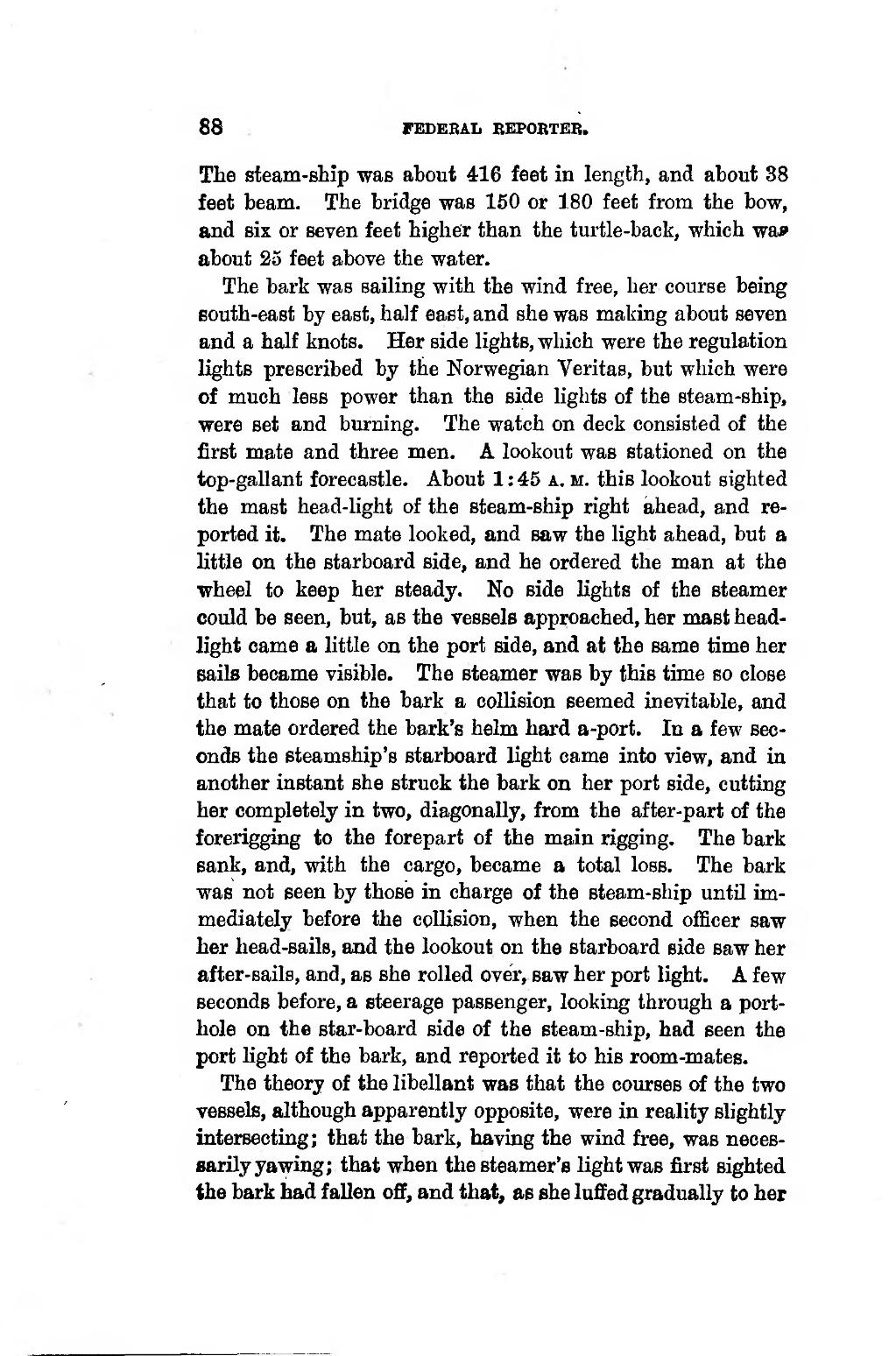88 FEDERAL REPORTKB. �The steam-shîp was about 416 feet in length, and about 38 feet beam. The bridge was 150 or 180 feet from the bow, and six or seven feet higher than the turtle-back, which wat» about 23 feet above the water. �The bark was sailing with the wind free, lier course being Bouth-east by east, half east, and she was making about seven and a half knots. Her side lights, which were the regulation lights prescribed by the Norwegian Veritas, but which were of much less power than the side lights of the steam-ship, were set and burning. The watch on deck consisted of the first mate and three men. A lookout was stationed on the top-gallant forecastle. About 1:45 a., m. this lookout sighted the mast head-light of the steam-ship right ahead, and re- ported it. The mate looked, and saw the light ahead, but a little on the starboard side, and he ordered the man at the wheel to keep her steady. No side lights of the steamer could be seen, but, as the vessels approached, her mast head- light came a little on the port side, and at the same time her sails became visible. The steamer was by this time so close that to those on the bark a collision seemed inevitable, and the mate ordered the bark's helm hard a-port. In a few sec- onds the steamship's starboard light came into view, and in another instant she struck the bark on her port side, cutting her completely in two, diagonally, from the after-part of the forerigging to the forepart of the main rigging. The bark sank, and, with the cargo, became a total loss. The bark was not seen by those in charge of the steam-ship until im- mediately before the collision, when the second oiScer saw her head-sails, and the lookout on the starboard side saw her after-sails, and, as she roUed over, saw her port light. A few seconds before, a steerage passenger, looking through a port- hole on the star-board side of the steam-ship, had seen the port light of the bark, and reported it to his room-mates. �The theory of the libellant was that the courses of the two vessels, although apparently opposite, were in reality slightly intersecting; that the bark, having the wind free, was neces- sarilyyawing; that when the steamer 's light was first sighted the bark bad f allen off, and that, as she luffed gradually to her ����
